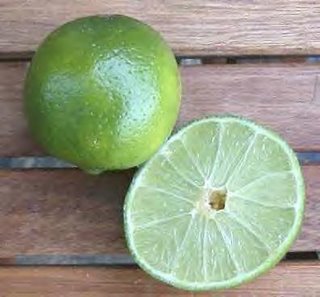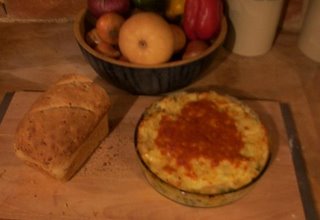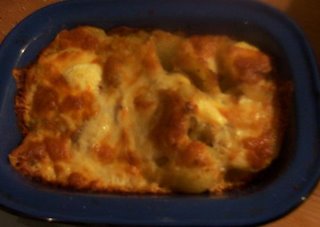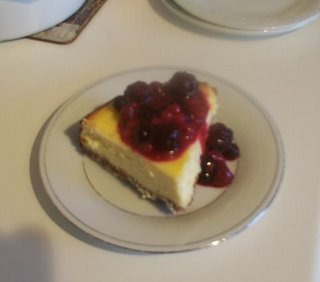Split Pea and Ham soup and Miso Soup seem worlds apart, not only in distance, but in texture, flavour and content. However, I found myself making both of these soups recently as part of a self-enforced "healthy eating regime".
Let me elaborate. My husband’s penchant, when he is feeling healthy, is for plain boiled rice with soy sauce and miso soup in a teacup. Me, with my Irish tendencies, I prefer a more substantial soup, something a bit more rib-sticking. If it’s not Gumbo (only a soup in the very loosest sense of the word really) or Chowder then it must be Split Pea and Ham Soup.
I could wax lyrical forever about soup. My husband loves to bake bread, I love make soup, so it works out serendipitously. Furthermore, soup is so easy to make.
Miso Soup is possibly the world’s easiest soup (barring the ubiquitous cuppa-soup or any powder based soup that relies on boiling water from the kettle to rehydrate it): a spoonful of the paste into a pan of simmering water and that’s it: that’s your broth. Of course, I feel that Miso Soup benefits from some slithers of red-hot chilli and, to redress the balance, some fresh golden ginger root to sooth your world-weary stomach and some spring onion for colour and flavour. I have also, untraditionally, added bok choi, cut into raggy green ribbons and my husband loves silken tofu in his. I’m not a huge tofu fan generally but it works in this salty, savoury broth and sometimes your body just cries out for something nourishing.
Miso (fermented barley, rice or soy beans mixed with soy sauce) is a traditional Japanese ingredient that is also used to flavour meats and vegetables. When mixed with Dashi soup stock, it is called Misoshiru and is served with every meal. Miso is incredibly high in protein and vitamin rich so is a valuable aid for people on vegetarian diets too. You can also buy sachets of Miso powder to which you add water. These are not quite so rich in nutrients as the paste but convenient and tasty nonetheless.
For the soup that I made on Monday night, we used Mugi Miso – made with fermented Barley.
 MISO SOUP serves 4 generously
MISO SOUP serves 4 generously
reade more...
Let me elaborate. My husband’s penchant, when he is feeling healthy, is for plain boiled rice with soy sauce and miso soup in a teacup. Me, with my Irish tendencies, I prefer a more substantial soup, something a bit more rib-sticking. If it’s not Gumbo (only a soup in the very loosest sense of the word really) or Chowder then it must be Split Pea and Ham Soup.
I could wax lyrical forever about soup. My husband loves to bake bread, I love make soup, so it works out serendipitously. Furthermore, soup is so easy to make.
Miso Soup is possibly the world’s easiest soup (barring the ubiquitous cuppa-soup or any powder based soup that relies on boiling water from the kettle to rehydrate it): a spoonful of the paste into a pan of simmering water and that’s it: that’s your broth. Of course, I feel that Miso Soup benefits from some slithers of red-hot chilli and, to redress the balance, some fresh golden ginger root to sooth your world-weary stomach and some spring onion for colour and flavour. I have also, untraditionally, added bok choi, cut into raggy green ribbons and my husband loves silken tofu in his. I’m not a huge tofu fan generally but it works in this salty, savoury broth and sometimes your body just cries out for something nourishing.
Miso (fermented barley, rice or soy beans mixed with soy sauce) is a traditional Japanese ingredient that is also used to flavour meats and vegetables. When mixed with Dashi soup stock, it is called Misoshiru and is served with every meal. Miso is incredibly high in protein and vitamin rich so is a valuable aid for people on vegetarian diets too. You can also buy sachets of Miso powder to which you add water. These are not quite so rich in nutrients as the paste but convenient and tasty nonetheless.
For the soup that I made on Monday night, we used Mugi Miso – made with fermented Barley.
 MISO SOUP serves 4 generously
MISO SOUP serves 4 generouslyIngredients:
2 Pints Water
Large Teaspoon Miso Paste
2 Spring Onions, chopped, including the greenery
1 or 2 Red Chillis, deseeded and cut into thin shards
½” Ginger, peeled into cut into strips
Pack Tofu cut into chunks
Some White Pepper
Soy Sauce and Sesame Oil for seasoning (optional)
METHOD:
2 Pints Water
Large Teaspoon Miso Paste
2 Spring Onions, chopped, including the greenery
1 or 2 Red Chillis, deseeded and cut into thin shards
½” Ginger, peeled into cut into strips
Pack Tofu cut into chunks
Some White Pepper
Soy Sauce and Sesame Oil for seasoning (optional)
METHOD:
Pour the water onto a saucepan, bring slowly to a gentle simmer and stir in the Miso Paste. Stir gently, the water will turn a very mahogany cloudy colour. Add the spring onions, chilli, ginger and tofu. Allow the vegetables and tofu to warm throw and flavour the broth for a couple of minutes. Taste and if you like, add some white pepper, soy sauce and sesame oil. Serve in bowls (or teacups) and feel instantly more virtuous.
And from a delicate, glass-like soup to an altogether more substantial soup: Split Pea and Ham. Just the name of it evokes big burly Rugby players chugging down gallons of the thick, green soup as opposed to gentle geishas daintily sipping broth.
Sometimes I enjoy soup so thick that the spoon stands up in it, like a guardsman standing to attention. I’m talking about good, hearty soups that could serve as a main course for a meal instead of a palate enhancing appetiser.
Of course, pulses being one of the first foods that man discovered he could preserve for time infinitum, split pea soup has been around for many centuries. According to Wikipedia, Aristophones writes about it in The Birds, which would date it at around 414BC. Pea Soup was sold in the streets of Athens as we today sell hot dogs or ice creams. I wonder why we lost favour in the soup? Probably the discovery of other, more interesting ingredients. As was then, is as now. Food comes and goes in waves and fashion.
Pea Soup is possibly one of the most famous and far reaching soups in the world. It is still served regularly in Denmark, The Netherlands, Finland and Sweden, where they are much more reverential about their food and history. It is seen far less often in the UK where we prefer our soups to be a little more exciting than plain old pea and ham. More’s the pity because a decent, homemade Pea and Ham soup is more flavourful and nutritious than anything out of a can and on those days when it’s cold and rainy and the last golden leaves are falling from the trees with only the suggestion of a breeze, you yearn for soup like this, a liquid version of pease pudding and bacon.
I used a recipe from Tamasin Day Lewis’ Kitchen Bible but I had run out of celery AND carrots (two things that a decent kitchen should never run dry of) but I made do with what I had (I had no option really, as I had already put the peas onto boil and I wasn’t about to waste them).
SPLIT PEA AND HAM SOUP, easily serves 4-6
And from a delicate, glass-like soup to an altogether more substantial soup: Split Pea and Ham. Just the name of it evokes big burly Rugby players chugging down gallons of the thick, green soup as opposed to gentle geishas daintily sipping broth.
Sometimes I enjoy soup so thick that the spoon stands up in it, like a guardsman standing to attention. I’m talking about good, hearty soups that could serve as a main course for a meal instead of a palate enhancing appetiser.
Of course, pulses being one of the first foods that man discovered he could preserve for time infinitum, split pea soup has been around for many centuries. According to Wikipedia, Aristophones writes about it in The Birds, which would date it at around 414BC. Pea Soup was sold in the streets of Athens as we today sell hot dogs or ice creams. I wonder why we lost favour in the soup? Probably the discovery of other, more interesting ingredients. As was then, is as now. Food comes and goes in waves and fashion.
Pea Soup is possibly one of the most famous and far reaching soups in the world. It is still served regularly in Denmark, The Netherlands, Finland and Sweden, where they are much more reverential about their food and history. It is seen far less often in the UK where we prefer our soups to be a little more exciting than plain old pea and ham. More’s the pity because a decent, homemade Pea and Ham soup is more flavourful and nutritious than anything out of a can and on those days when it’s cold and rainy and the last golden leaves are falling from the trees with only the suggestion of a breeze, you yearn for soup like this, a liquid version of pease pudding and bacon.
I used a recipe from Tamasin Day Lewis’ Kitchen Bible but I had run out of celery AND carrots (two things that a decent kitchen should never run dry of) but I made do with what I had (I had no option really, as I had already put the peas onto boil and I wasn’t about to waste them).
SPLIT PEA AND HAM SOUP, easily serves 4-6
Ingredients: 
250g Split Peas (for that distinctive Exorcist colour, use green but I only had yellow in the house)
A Ham Bone (or, as I used, a small, cheap joint of smoked ham thrown in whole)
2 Sticks Celery chopped
2 Carrots, peeled and chopped
2 Onions, studded with 4 cloves
A Bay Leaf
5-6 Peppercorns
A Bouquet Garni comprising of some Parsley, Thyme and Rosemary
A Clove of Garlic, chopped
1 Litre Chicken Stock (I used fresh as I had some left over from the Coq Au Vin that I made, but you can use stock cubes)
1 Leek, outer leaves removed, sliced
Smoky Bacon rashers, cut into small pieces
METHOD:
In a large saucepan fry the bacon pieces off until they have rendered their delicious, salty juices and turned golden brown.
Turn the heat down and add the celery, garlic and carrots and cook until gently softened, about 3-4 minutes.
Pour over the chicken stock, add the split peas, studded onion, ham bone or joint and tuck in the bouquet garni.
Bring to the boil, skim off any scum (which is just proteins floating away from the meat), turn down and leave to simmer for between 30 minutes to an hour or until the peas are soft. At this stage you can season the soup. If you season the soup whilst you are cooking the split peas (or any pulses in fact), they will toughen up. You want them to be tender.
At this stage you can puree the soup. Remove the bone (or ham joint) and the bouquet garni. Pick out the cloves.
I do the processing in batches because my poor, feeble blender can only manage small amounts before it starts coughing and spluttering and asking for time out. I scoop out some of the bacon pieces and the ham joint (if using)
Anyway, pour the pureed soup into a clean saucepan, with the bacon pieces and warm through gently. Taste again for seasoning. You may find you want to dilute the soup if it’s too thick – use water or stock or some milk.
If you used the ham joint, rip this into pink shreds and scatter over the top of the soup as you serve it with some crusty bread (preferably homemade) and butter.

250g Split Peas (for that distinctive Exorcist colour, use green but I only had yellow in the house)
A Ham Bone (or, as I used, a small, cheap joint of smoked ham thrown in whole)
2 Sticks Celery chopped
2 Carrots, peeled and chopped
2 Onions, studded with 4 cloves
A Bay Leaf
5-6 Peppercorns
A Bouquet Garni comprising of some Parsley, Thyme and Rosemary
A Clove of Garlic, chopped
1 Litre Chicken Stock (I used fresh as I had some left over from the Coq Au Vin that I made, but you can use stock cubes)
1 Leek, outer leaves removed, sliced
Smoky Bacon rashers, cut into small pieces
METHOD:
In a large saucepan fry the bacon pieces off until they have rendered their delicious, salty juices and turned golden brown.
Turn the heat down and add the celery, garlic and carrots and cook until gently softened, about 3-4 minutes.
Pour over the chicken stock, add the split peas, studded onion, ham bone or joint and tuck in the bouquet garni.
Bring to the boil, skim off any scum (which is just proteins floating away from the meat), turn down and leave to simmer for between 30 minutes to an hour or until the peas are soft. At this stage you can season the soup. If you season the soup whilst you are cooking the split peas (or any pulses in fact), they will toughen up. You want them to be tender.
At this stage you can puree the soup. Remove the bone (or ham joint) and the bouquet garni. Pick out the cloves.
I do the processing in batches because my poor, feeble blender can only manage small amounts before it starts coughing and spluttering and asking for time out. I scoop out some of the bacon pieces and the ham joint (if using)
Anyway, pour the pureed soup into a clean saucepan, with the bacon pieces and warm through gently. Taste again for seasoning. You may find you want to dilute the soup if it’s too thick – use water or stock or some milk.
If you used the ham joint, rip this into pink shreds and scatter over the top of the soup as you serve it with some crusty bread (preferably homemade) and butter.



















